 |
|
| On this web site, we would like to introduce photos of the landscapes in the Republic of Belarus, field activities by the Chernobyl Medical Support Network and so on. (All the photos on the site are NOT allowed to be reproduced, copied or used without prior permission.)
|
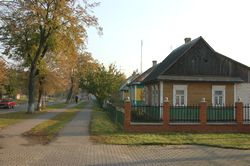 |
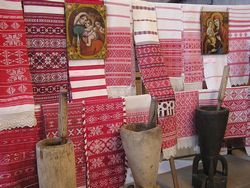 |
| Landscape of countryside in Belarus
On the outskirts, we see may colorful houses, which are less common in Japan.
|
Belarusian traditional embroideries
These embroideries are very common in Belarus. Their national flag and traditional costumes are also embroidered with these patterns.
|
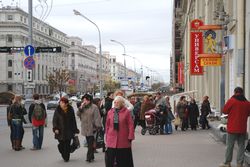 |
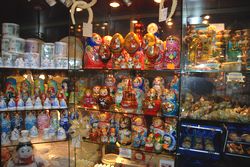 |
Atmosphere in Minsk
People are coming and going in the center of the capital city, Minsk. On holidays, many people also gather at a shopping mall.
|
Goods displayed inside the shop window
The Shelves are full of colorful nesting dolls which are famously called “matrioshka” and small pottery.
|
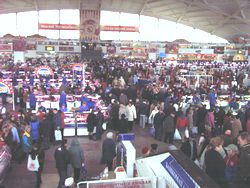 |
 |
| Bazaar in Minsk
The bazaar is crowded with lots of people on holidays. They enjoy shopping with their family members and friends. |
Another photo of the bazaar in Minsk
Brightly-colored fruit and vegetables are arranged in a corner of the shop. Various ingredients such as meats, eggs and cakes are also sold at the bazaar.
|
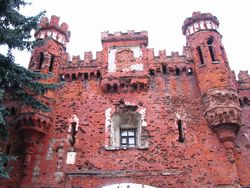 |
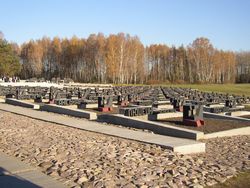 |
| The Brest Fortress
This fortress is also known as Brest-Litovsk Fortress, located near the border with the Republic of Poland. It has been subject to repeated invasions by foreign countries in the past. Many bullet holes are still left on the bricks of the fortress.
|
Forest of Hatyn in the Minsk suburb
A lot of villages were burnt down by the Holocaust during World War II. Hatyn is one of such villages. After the war ended, this area has been reserved as a peace memorial park to pass down the history. Many village names are carved on the gravestones.
|
|
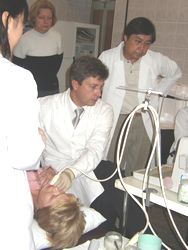 |
 |
| Thyroid cancer screening test in Brest
We send Japanese medical experts to the city of Brest once or twice a year and conduct a thyroid cancer screening test with local professionals to achieve an established early detection and treatment system for thyroid cancer in Belarus.
|
Ultrasonography
They perform a thyroid gland examination by ultrasonography (Ultrasound diagnostic equipment). If they find any abnormality in a patient, fine-needle aspiration biopsy is also carried out to him or her.
|
 |
 |
| Dr. Arthur, who is performing fine needle aspiration biopsy
Looking at a sonogram, he removes tissues which are suspected of being cancerous. Then, he stains the tissues and examines if any cancerous cells exist in the removed samples through a microscope.
|
Training of the local staff
Dr. Elena is preparing specimens from removed tissues. More than 10 years has passed since the thyroid cancer screening test project started in 1997, and the local staff have improved their medical skills.
|
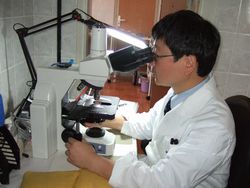 |
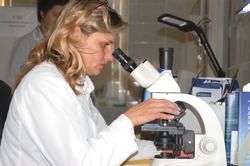 |
| Cytological examination
They examine if any cancerous cells exist in the removed tissue samples through a microscope. Giving a diagnosis in the local areas, they can decrease mental health burden among patients who suspect if they are ill.
|
Dr. Alina, who examines cells through a microscope
In comparison to the number of the doctors, that of the pathologists who perform a cytological examination is overwhelmingly low in Belarus. To achieve an early detection and treatment system for thyroid cancer, training of the pathologists who can perform the cytological examination will become a big challenge.
|
 |
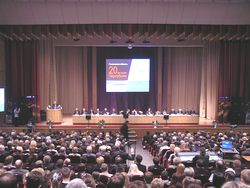 |
| In April 2006, 20 years after the Chernobyl nuclear power plant accident happened on April 26, 1986, International Conference ≪20 Years After Chernobyl: Strategy for Recovery and Sustainable Development of the Affected Regions≫ was co-hosted by the United Nations Development Program (UNDP) and
Committee for Overcoming the Chernobyl Accident Consequences under the Council of Ministers of the Republic of Belarus and held in Belarus.
|
1,600 people from 40 countries around the world attended this conference. Researchers, specialists and NGOs in addition to government delegates from Belarus, Russia and Ukraine, international institutes such as the International Atomic Energy Agency (IAEA), International Red Cross, United Nations, etc. are included in the participants.
*NGO: Nongovernmental Organizations
|
 |
| Round-table report on activities by NPOs
The second day of the International Conference, NPOs and NGOs in each country attended the round-table conference to report on their own activities. They made a presentation of the project for thyroid cancer screening in Brest.
* NPO: Nonprofit Organisations
|
|
|
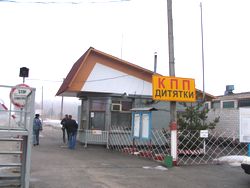 |
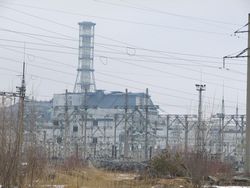 |
| The checkpoint exists within 10 kilometers of the Chernobyl nuclear power plant. Only authorized persons are allowed to access beyond this point. |
This is the fourth reactor of the Chernobyl nuclear power plant, which caused a disastrous accident. |
 |
 |
“Pripyat” used to be a city full of nuclear plant workers and their family members. Former residents still visit this city every April 26.
|
“The Ferris wheel in Pripyat” is nestling in the uninhabited city. As the nuclear power plant accident had occurred before the Ferris wheel started to operate, no one has ever visited and gathered at this place. |
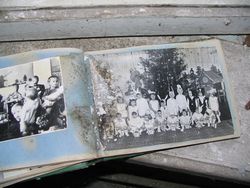 |
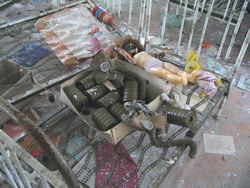 |
| This album has been left at a kindergarten in Pripyat. We believe that all the children on the photos would be already over 20 years old and wonder how and where they are living now. We hope they are all fine. |
This nap room at the kindergarten has also been left since the accident. Just the time has been passing by with beds and toys left along with gas masks. |
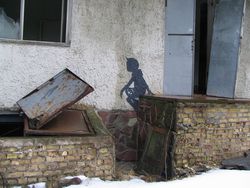 |
| As more than 20 years has passed since the Chernobyl accident, we see more graffiti by visitors in Pripyat, |
|
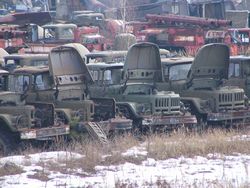 |
 |
| This is the Rassoha village, where a radioactive waste disposal site exists. There are a large number of military trucks which were used to settle the accident. These trucks have not yet been disposed of and they have been still left there. |
This is a military helicopter used for fire extinction of the fourth reactor from the above at the time of the accident. It is ironic that various weapons were used to settle the nuclear power plant accident, which was built for peaceful uses. |
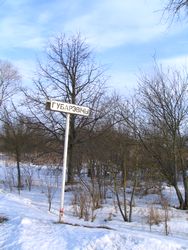 |
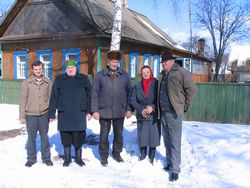 |
| “Gubarevitch” is a village which has been erased from the map. Most of the residents in this village were forced to migrate to other places after the Chernobyl nuclear power plant accident |
They still remain in Gubarevitch and are living there. Since they could not get used to living in the migrant settlement and eventually returned to their hometown, they are called “Самоселы”, which means selfish people. |
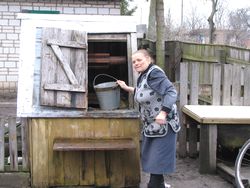 |
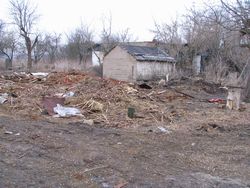 |
| Ms. Nadja uses water hauled out of this well at her house to cook all the dishes every day. |
These houses have yet remained over 20 years after the nuclear power plant accident. Some immigrants from each republic country in the Soviet Union and the non-contaminated areas in Belarus have begun to live in abandoned houses like these ones. As conflicts broke out in their countries or they could not have steady jobs, they have been seeking the place where they can live safely and gotten here. |
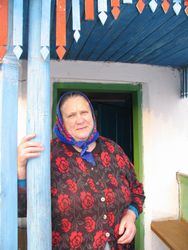 |
| Her name is Nina. She decided to leave her village and move into the city of Gomel, where her daughter was living. Being reluctant to leave there, she had her photo taken before the house, in which she was accustomed to living. |
|
|
|
|
 |


